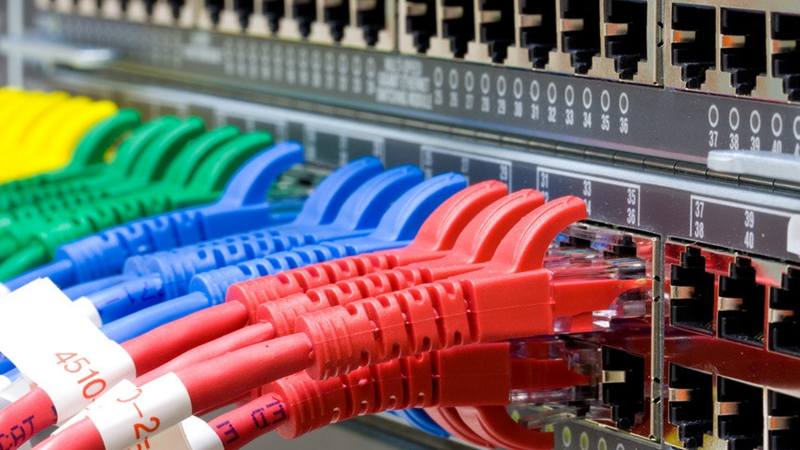Cat6, Cat6a, Cat7, and Cat8 Cable: Difference and Buying Guide 2022
Ethernet Cables are available in a wide array of options which are called categories. The latest categories of ethernet cables are the Cat8 and Cat7 cables which are used in data center structured cabling applications. Similarly, for commercial and residential use, the latest ethernet cable categories are Cat6 and Cat6a cable.
When you are buying Ethernet cables for the first time, the sheer amount of choices can be overwhelming. But it does not have to be that way. So in this blog, we are breaking down the differences between all the latest ethernet cables. We will also guide you through the buying process of ethernet cables in 2022.
Let’s get right into it.
Cat6 Cable
Cat6 Ethernet cable is available in a multitude of options to choose from. But what makes it stand out in the crowd of ethernet cabling solutions is its performance. It supports a 1 GBit/s data transmission speed at 100 meters and 50 meters, it has a whopping 10 GBit/s data transfer speed.
Further, it has a 550 MHz bandwidth capacity that makes it ideal for use in both home and commercial applications. It also comes with different conductors, jackets, and shielded/unshielded designs to cater to all kinds of applications.
Pros and Cons:
Highly cost-effective and reliable but 10 Gigabit speed is limited only to 50 meters.

Cat6a Cable
This cable is the augmented version of category 6. Known as Cat6a, it can transmit data seamlessly at 10 GBit/s without lag. The highlight of this cable is its resistance against EMI (electromagnetic interference) and crosstalk. It features 23 AWG conductors that are made out of bare copper only. These conductors make the cable ductile and easy to install.
Pros and Cons:
Affordable, easy to install, and highly reliable and the only downside of the Cat6a Ethernet cable is its size and weight. Because it is a high-performance cable, it can be a little bulky.
Cat7 Cable
The Cat7 is a heavily shielded cable for environments where the EMI and crosstalk are a maximum. It is designed to relay strong signals over long distances without entertaining any interference.
The IEEE standard must be produced with shielded pure copper conductors and a foil shield around the conductor bunch to allow absolutely no stray signals from its vicinity. Consequently, the cable can transmit data at extremely high speeds over long distances.
As per the IEEE standard, Cat7 should have a minimum of 600 MHz bandwidth capacity but it is common for it to exceed this requirement by a wide margin.
Pros and Cons:
Highly reliable, future-proof, and everlasting but it can be difficult to install and comes at a hefty price.
Cat8 Cable
Cat8 or category 8 is the latest ethernet cable category. It is designed for indoor short-distance transmissions. Specifically in large data centers where the requirement is to connect devices that are placed not too far from each other.
It has a mammoth-sized bandwidth capacity of up to 2000 MHz and a 25/40 GBit/s data transmission rate but it is limited to only 30 meters unlike all the other cables on our list that are limited to 100 meters.
Pros and Cons:
Cat8 cable has the highest bandwidth capacity among all Ethernet cables but it is limited only to a length of 30 meters. It is also a bit expensive for the regular user. However, for data centers and server rooms, it can be the best solution.
How to Buy?
There are three steps to buying the right ethernet cable which apply to all sorts of cabling needs.
Requirements:
First, brainstorm the purpose of buying the cable. Ask yourself, what do I need it for? Then brainstorm how much you will need it and what sort of a cable?
Shortlisting the cable:
Once you have answers to all the questions above, you should know, the specifications and the quantity of the cable. Use these answers to decide the cable that is right for you.
For example, if you need the cable for a relatively small office network, you will need a Cat6 bare copper cable (1 GBit/s speed and 550 MHz bandwidth; supports all high-speed ethernet applications including PoE). And you will possibly need 3 thousand feet.
Making the Purchase:
Now that you know the type and the amount of cable you need, you have to make the purchase. This bit is tricky. You not only need to buy a certified cable, but you also need to make sure that the manufacturer is reliable and trustworthy.
Further, if the manufacturer does not provide a guarantee and customer support, you may want to explore other options.
JMTO Cables
For cutting-edge ethernet cables or accessories, check out JMTO Cables. We are the industry leader in manufacturing networking cables and accessories of the highest standards. Our products exceed the industry standards and we are offering market competitive prices. If you need assistance, our professional customer support team is available at cw_duanqingyun@jmtjm.com
By continuing to use the site you agree to our privacy policy Terms and Conditions.